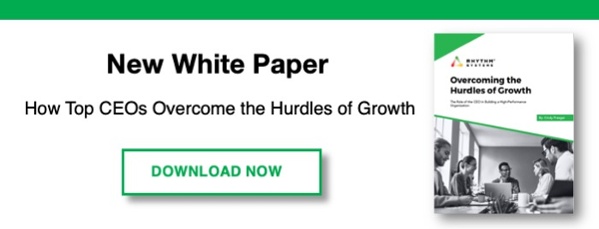Blog written by Guest Blogger, Eskinder Assefa
When a company fails to meet its stated  objectives, employees and executives must ask whether the failure is due to strategy, execution, or a combination of the two. The culture of a workplace can significantly affect the execution of a company’s strategies. In their HBR article entitled The Leader’s Guide to Corporate Culture,[1] Groysberb et al. state that “culture can fluidly blend the intentions of top leaders with the knowledge and experiences of frontline employees.” From these observations, we may conclude that execution is heavily tied to the right “culture”—a culture of high performance. Shaping the right culture for organizational performance is just as important for leadership as formulating the right strategy.
objectives, employees and executives must ask whether the failure is due to strategy, execution, or a combination of the two. The culture of a workplace can significantly affect the execution of a company’s strategies. In their HBR article entitled The Leader’s Guide to Corporate Culture,[1] Groysberb et al. state that “culture can fluidly blend the intentions of top leaders with the knowledge and experiences of frontline employees.” From these observations, we may conclude that execution is heavily tied to the right “culture”—a culture of high performance. Shaping the right culture for organizational performance is just as important for leadership as formulating the right strategy.
Defining a High-Performance Organization
A high-performance organization is one that achieves results that set them far above their peers, over a period of five years or more, by focusing on what matters most to the organization.[2] In his paper entitled The Characteristics of High-Performance Organizations, Andre A. de Waal studies the characteristics of high-performance. Through the course of his study, several themes of high performance emerge: communication and clarity of purpose, sharing and collaboration, flexibility and simplicity, accountability and trust, and autonomy and learning.
By measuring these characteristics and improving what matters, CEOs can create and sustain a high-performance organization. James Hiskett, Harvard Business School Professor of Management, believes that up to 50% of the differences in operating incomes can be attributed to culture.[3]
In essence, the right mission drives the right values, which, in turn, drives the right behaviors. This leads to the desired consequences—the development of a high-performance culture, with strong financial performance and loyal, happy, and engaged customers. Cathy McCullough of Rhythm Systems writes about the “Five C’s of Leadership and Team Accountability”[4] that help build and sustain high-performance teams. These “Five C’s” include common purpose, clear expectations, communication and alignment, collaboration, and consequences.
High-Performance Starts with the Right Purpose and Mission
Some practical conclusions can be drawn about workplace culture and its impact on high-performance. CEOs shape high-performance culture by choosing what they measure, improve, and reward; however, the drivers behind high-performance tend to be more fundamental, such as shared mission, values, and behaviors that lead to the desired consequences. It is clear that CEOs must place a higher premium on communicating in several different ways about what is expected to drive high-performance, rather than assuming that tracking a few quantitative metrics will assure the organization of high-performance.
The financial impacts of high-performance cultures have, in fact, been measured. In their book Corporate Culture and Performance, John P. Lotter and James Heskett study and measure performance, and noted that firms with performance-enhancing cultures outperformed those that did not have performance-enhancing cultures.
A High-Performance Case Study

BioPlus, a seller of very expensive, life-saving, specialty medication to treat rare and complex diseases exemplifies how a high-performance culture is different. While the $100 million company had stellar growth, CEO Dr. Stephen Vogt was not satisfied.
BioPlus’ core customers complained about how difficult and time consuming it was to obtain referrals to get their patients the specialty medicines they desperately needed. They had to make too many phone calls for each referral; they had to fill out too much paperwork. At the time, it took them 2-3 days to respond to a referral. The time to respond was the critical problem they had to solve. In one pivotal meeting, somebody asked, "Instead of 2 days, what if we got back to them in 2 hours?"
The team started building the systems, processes, technologies, and organizational structure that would enable them to deliver on the 2-hour guarantee. Most importantly, the team got very specific about how success would be measured. They decided that a 95% or better delivery rate within the two-hour window was the goal, and anything less than 80% would be considered unacceptable. They reviewed this weekly and anytime they were off track.
As a result, the team consistently achieved over 98.9% on their fulfillment promise every week, and the company grew over 400% over the next three years.
Rhythm: The High-Performance Platform
While the BioPlus teams were highly motivated and engaged around a common purpose, their real breakthrough came when they used the Right Rhythm of Work™ supported by Rhythm Systems. To learn more about the Rhythm Platform, please visit rhythmsystems.com or schedule time to talk to our team to see how your company can become a high-performance organization.
[1] https://hbr.org/2018/01/the-culture-factor
[2] http://unpan1.un.org/intradoc/groups/public/documents/apcity/unpan038571.pdf
[3] https://www.youtube.com/watch?v=x4PaX939cPM
[4] https://www.rhythmsystems.com/blog/the-five-cs-of-team-accountability
If you enjoyed this post, here are some others you may like:
A Leader's Template: 6 Questions to Ask in Your Next One-on-One Meeting
5 Insights You'll Learn from Executive Coaching
Employee KPI Examples: How to Measure What You Want to Move
The Five C's of Team Accountability
Strategic vs. Tactical Leaders: Which Are You? [Video]
11 Books Every CEO Should Read
Daily Routines of Successful CEOs [Infographic]
4 Easy Steps to Fix Your Weekly Staff Meetings [Video]
Photo Credit: iStock Getty Images



